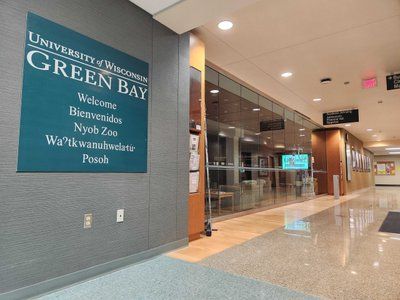By Tom Still
MADISON – To the casual visitor and even some insiders, the UW-Madison doesn’t seem like an institution under pressure. Construction cranes rise above the 933-acre campus, where a combination of gleaming new buildings and refurbished landmarks leave the impression that all is well within sight of Bascom Hill.
Appearances can be deceiving. Behind the hustle and bustle that characterizes Wisconsin’s largest and oldest public university are signs of strain – not unlike those that also shadow other major research universities, but nonetheless troubling.
These await the next chancellor of UW-Madison, a leader who will be selected from a list of four finalists to succeed John Wiley. They are Rebecca Blank of the University of Michigan, Carolyn Martin of Cornell University, R. Timothy Mulcahy of the University of Minnesota, and Gary Sandefur of the UW-Madison. The choice of the 29th campus chancellor may rest on a Board of Regents’ assessment of which candidate is best prepared to meet these challenges:
- Gaining financial flexibility. At more than $900-million per year, UW-Madison is the nation’s No. 2 university when it comes to attracting and investing research dollars. But it needs every dollar on the R&D side to counter stagnation on other fronts. UW-Madison receives scarcely more general-program tax support (meaning, money to run core instructional programs) today that it did in 1994-1995. Its tuition and fees are ninth among the 10 public universities in the Big Ten Conference. In fact, they’re about $2,400 below the conference midpoint, not even counting private Northwestern University tuition. Something’s got to give. Either state support increases – which seems unlikely given perpetual budget crunches – or the UW-Madison acquires more freedom to charge students what an education there is worth.
- Attracting, and retaining, the best and brightest. A recent story in the Chronicle of Higher Education, a newspaper that charts college and university trends, reported that UW-Madison is being poached for faculty members on a regular basis. Why? Faculty members are being lured away by salary packages that dramatically exceed what they’re paid at UW-Madison. Sure, some faculty are drawn away by promotions. But the real concern is over faculty (sometimes, groups of faculty) leaving for lateral positions – and earning 50 percent more. A related concern is morale among faculty who read a behavior-distorting message from above: Want a pay raise? Go out and get a better offer, and then we’ll talk with you.
- Keeping up with the (Ivy League) Joneses: Business Week recently reported on the “Dangerous Wealth of the Ivy League,” which concluded the academic rich are getting richer while even the best public universities are getting poorer. Most people in Wisconsin probably don’t care if Harvard or Yale have multi-billion-dollar endowments because they don’t think of UW-Madison as competing with them. But it does compete with those Ivies and other world-class universities for talent, research dollars and students – especially graduate students, who form the hidden foundation of a great research university. Business Week singled out UW-Madison as a prime example of public university troubles: “Over the past decade, Wisconsin’s state tax appropriations have risen by a total of 21.7 percent, or about half the increase in the Higher Education Price Index, compiled by the nonprofit Commonfund Institute. This puts it 41st among all states, according to the Center for the Study of Education Policy at Illinois State University. Other conspicuous laggards include Colorado, Iowa, Michigan and Ohio.”
It’s not as if Wiley and his team haven’t rung the alarm bells. Nor have they fallen behind in private fundraising. But the core problem hasn’t changed: UW-Madison cannot be assured of continued excellence under the status quo. The next chancellor cannot be a caretaker. He or she must build on existing strengths and position the UW-Madison to work with its natural constituencies, which include those on campus as well as beyond – businesses, policymakers, alumni and citizens.
A lot of work has been done through UW-Madison or UW System projects designed to re-engage those outside groups. A required reaccreditation review has involved key people inside the campus, as well as some outside voices. Those efforts represent a platform the next chancellor can stand upon.
Still is president of the Wisconsin Technology Council. He is the former associate editor of the Wisconsin State Journal in Madison.
###





